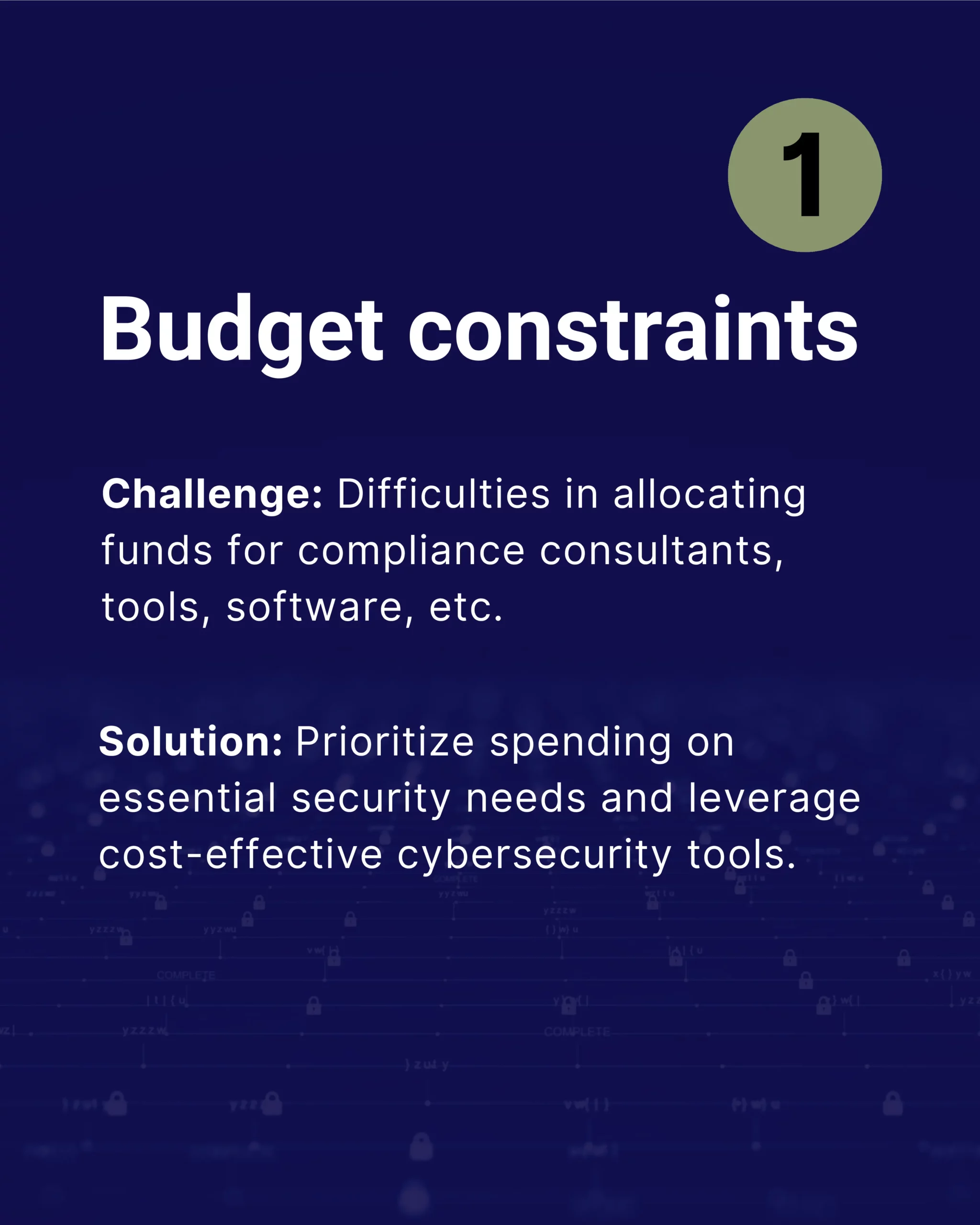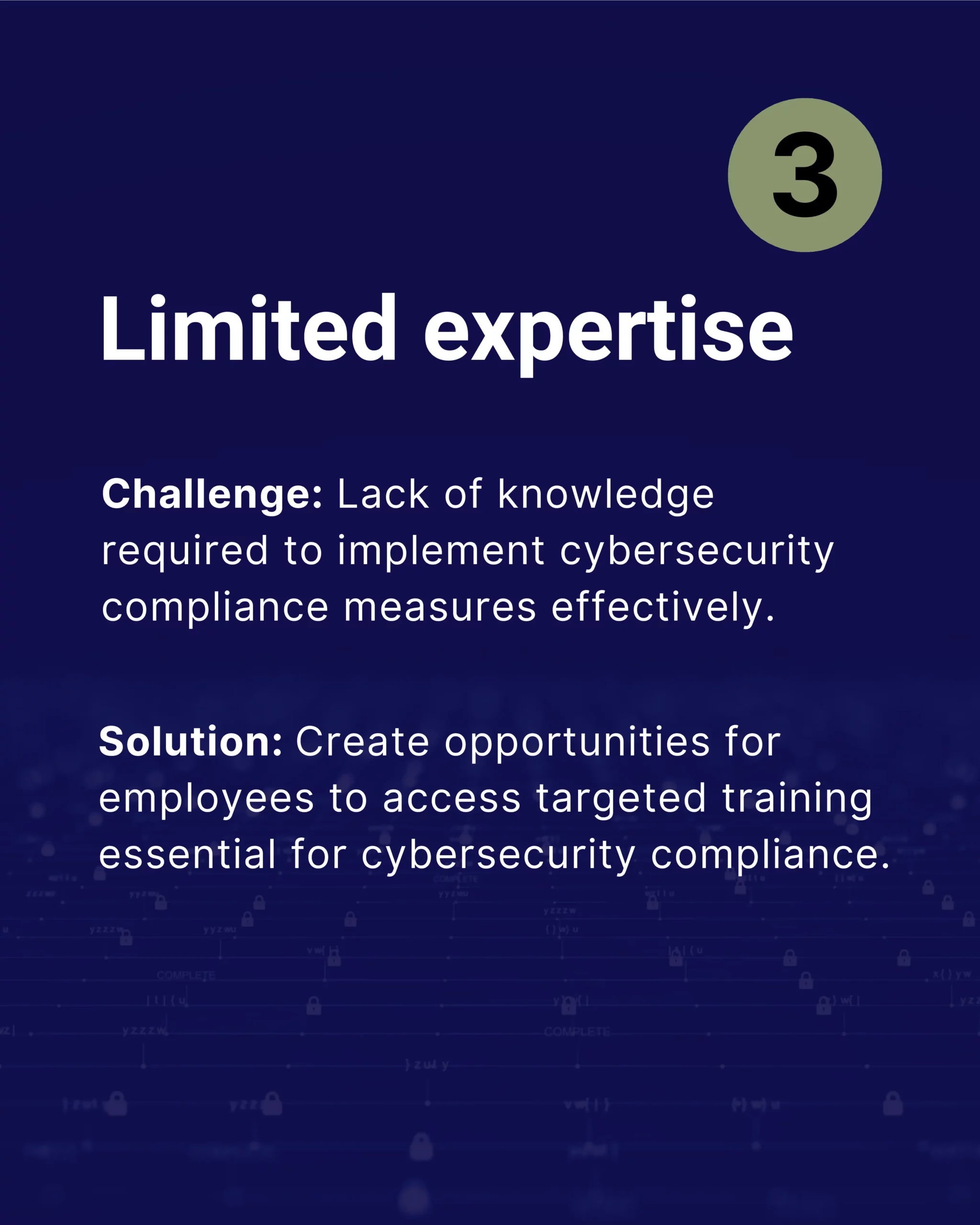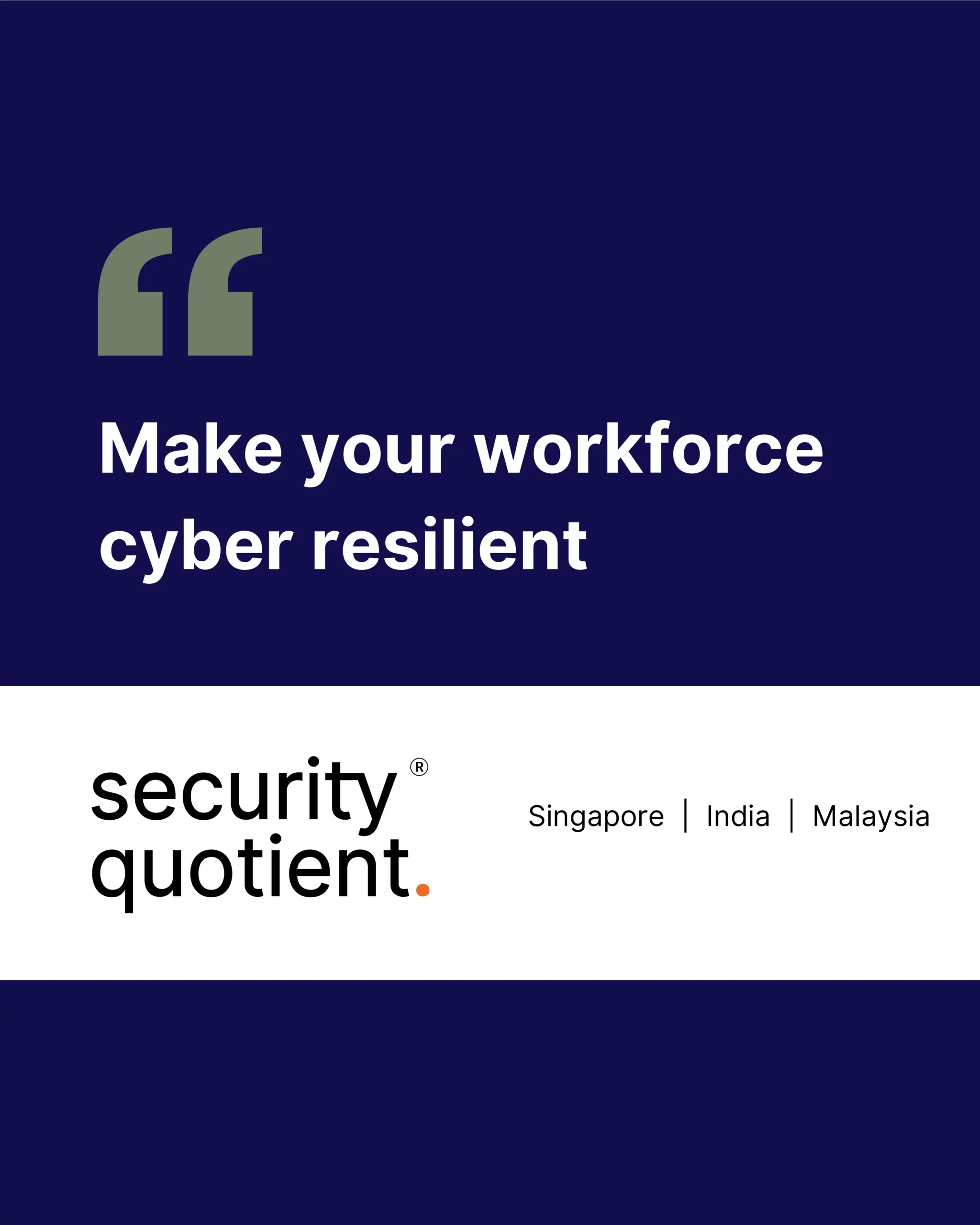
Table of Contents
Who should read this?
Small Business Owners, Managers and Team Leaders
In today’s digital environment, Small and Medium-sized Enterprises (SMEs) often underrate cyber security compliance because it is a seemingly daunting task. The ample challenges that come with compliance make SMEs reluctant to pursue compliance, ultimately resulting in security issues. This leads to non-compliance, resulting in legal issues, financial losses, reputational damage, and decline in customer trust. Therefore, understanding the primary challenges in attaining cyber security compliance and finding solutions to them is essential for achieving cyber security compliance.
SMEs often struggle with limited resources, which is a major challenge in achieving cyber security compliance. Constrained budgets, knowledge, small workforce, complex regulatory environment, lack of security tools and shift in work culture prevent SMEs from effectively securing their systems and data, making cyber security compliance even more difficult to attain.
Solutions to Major Compliance Challenges Faced by SMEs
1. Lack of Specialized Knowledge
Without the necessary knowledge and expert staff, SMEs may struggle to develop and implement effective compliance strategies, increasing the risk of non-compliance. Many smaller organizations rely on general IT support who might not be able to cover all aspects of cyber security compliance.
Solution: SMEs can enhance their cyber security knowledge by utilizing free online resources, such as blogs, articles, training and webinars focused on compliance best practices. SMEs can also create a schedule for periodic team discussions to review and share insights from these resources, ensuring everyone stays informed about the latest best practices and compliance requirements.
2. Limited Budget
Many SMEs operate on tight budgets, which can limit their capacity to implement necessary cyber security measures. This financial constraint can result in inadequate security resources and lead to non-compliance with regulations.
Solution: SMEs can prioritize their spending by focusing on essential security needs first by conducting a self-evaluation. SMEs may look for cost-effective cyber security tools and solutions. SMEs can use free online resources to train employees on basic cyber safety and encourage strong password practices. Additionally, they can rely on built-in security features in their existing devices to enhance protection.
3. Inadequate Security Tools
Many SMEs may not have access to the latest cyber security tools and technologies. Relying on outdated software or basic security measures can leave SMEs vulnerable to attacks and non-compliance with regulations.
Solution: SMEs should maximize the use of built-in security features of their existing tools. For instance, enabling alerts for suspicious activities and implementing Multi-Factor Authentication (MFA) can significantly enhance protection. Utilizing backup features in cloud storage solutions, like OneDrive, can be helpful in periodic backups of critical data to secure locations.
4. Complex Regulatory Environments
With numerous local, national and industry-specific regulations that frequently change, it can be difficult for SMEs to remain compliant. This complexity makes it challenging for SMEs to ensure they are compliant and safeguard their systems and data. For example, a small company may not be aware of changing regulatory requirements and could overlook updated GDPR articles while handling personal data of a European client, potentially leading to costly fines.
Solution: Keeping up with regulatory changes is essential. SMEs can benefit from joining industry associations, subscribing to relevant newsletters, or attending webinars that focus on compliance requirements specific to their sector, geographical location, and data. Being regularly updated can help SMEs to stay informed about new laws and best practices, enabling them to adapt their strategies accordingly.
5. Resistance to Change
Achieving cyber security compliance often requires a significant shift in workplace culture, moving away from established practices. It can be challenging to raise employee awareness about the importance of these changes and how they can reduce risks in daily activities. Many employees may be resistant to altering their routines, making it difficult to foster a culture of security that prioritizes compliance.
Solution: To tackle this resistance, leaders should communicate the benefits of compliance in relatable terms and involve employees in the process. Periodic training sessions that highlight real-life examples of security risks can help everyone understand why these changes matter. Creating an open space for employees to voice their concerns and share feedback will help build a more supportive atmosphere for change.
Strengthening Cyber Security Compliance for SMEs
While Small and Medium-sized Enterprises (SMEs) face challenges in achieving cyber security compliance, there are effective steps SMEs can take to overcome them. By addressing knowledge gaps, managing budgets wisely, using available tools, keeping up with regulations, and fostering a supportive workplace culture, SMEs can strengthen their cyber security compliance. These actions not only protect sensitive data but also build customer trust, contributing to the long-term success of the business in today’s digital environment.
FAQs
Article Contributor
Related Posts

Learning from UAE’s Major Data Breaches: A Guide for Organizational Leadership

Precision-Validated Phishing: When Attackers Target High-Value Victims






